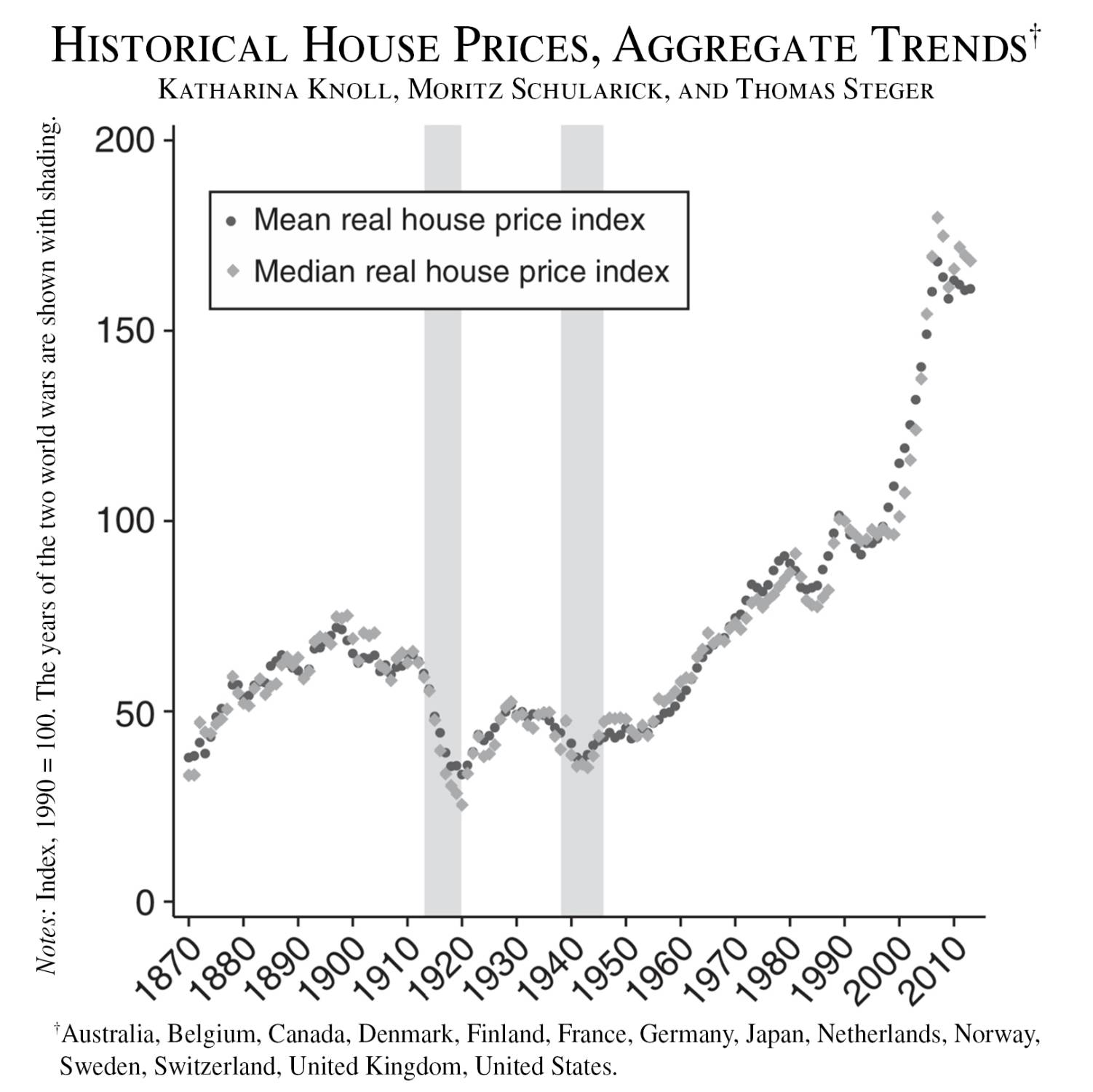Economist Chart NFT (with Moritz Schularick, Historical House Prices, Aggregate Trends) is a collaboration between Denny and the economist Moritz Schularick; together they created an NFT (non-fungible token) whose “image” is based on an iconic chart significant to the field of economics. In consultation with Schularick, Denny selected “Global Historical House Prices, Aggregate Trends,” first published in American Economic Review in 2017 and created by Schularick with colleagues working at the Institute for Macroeconomics and Econometrics, University of Bonn, and the Institute for Theoretical Economics, Macroeconomics, Leipzig University. The chart was the first time the global trend of substantially more rapidly increasing house prices was positioned in relation to growing inequality. It also illustrated the significant fact that this acceleration of rise in house prices coincided with the introduction of government-controlled fiat money (nationally issued currency unpegged from gold) in the 1970s—an oft-cited moment in pro-Bitcoin positions.
While appearing to be as dry and academic as an economic chart, and bearing the “aesthetics of administration” long associated with conceptual art, a provocative conceptual act underpins this NFT: Denny proposes that 100 percent of the profits from its sale will be shared between Kunsthalle Basel and Canton Basel-Stadt. In this way, the artist orchestrates the redirection of crypto profiteering back to the state. The canton’s share of the potential proceeds will go into the fund of the Office for Environment and Energy and be made available in full as subsidies for energy-saving measures. In view of the high energy consumption of digital and blockchain technologies, this act aims to set an example.
In the context of INFORMATION (Today), an exhibition that explores how artists have taken up as subjects encrypted networks, digital currencies, systemic inequalities, and other effects of twenty-first-century data-based capitalism, Denny’s new artwork puts its finger on these very issues while remaining wholly immaterial. Addressing the very pillars on which the NFT community stands, Denny reasons that starting with Bitcoin, the explosion of private, non-state-issued currencies and their meteoric rise in value have challenged the monopoly of the state in issuing and administering wealth. Switzerland has played an important part in this phenomenon, with several of the first currencies of this kind (for instance Ethereum) being legally founded in the canton of Zug. Denny’s artistic gesture thus structurally brings together the worlds of crypto and the question of who can issue and administer abstractions of value, all while ensuring that a buyer would, in the act of purchasing this artwork, support a worthy contemporary art institution at the same time that their hand is forced to also support a centralized state organization—the very thing that those involved in crypto seem to try to avoid.


